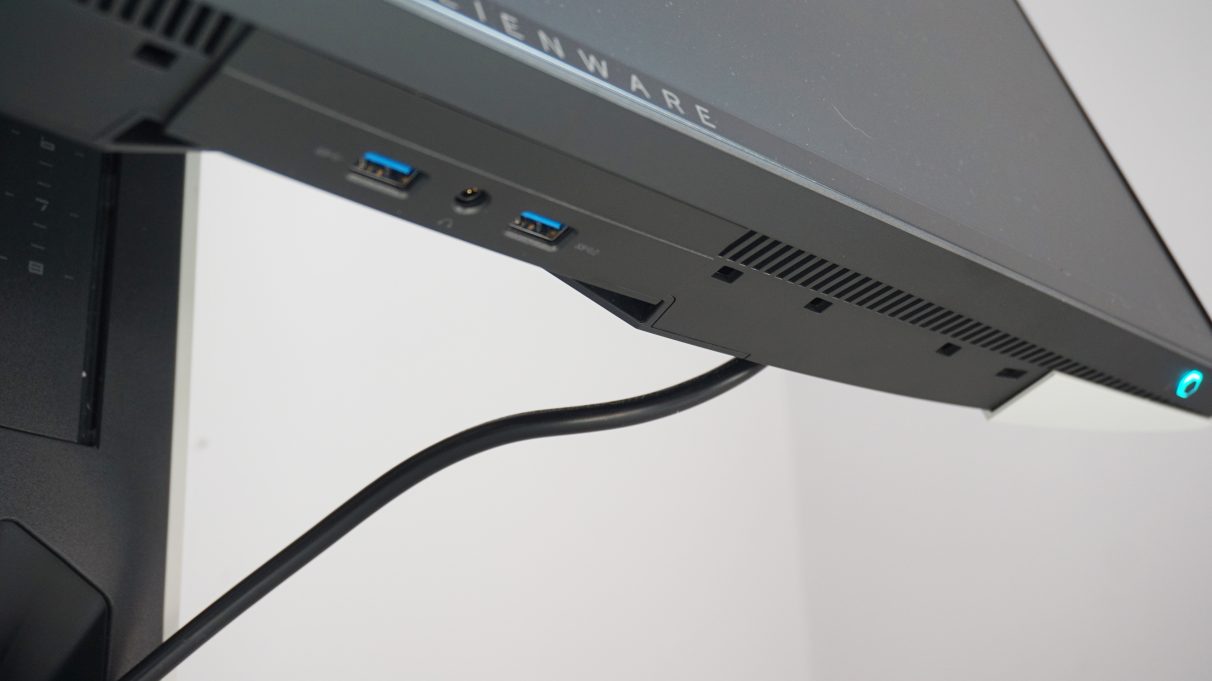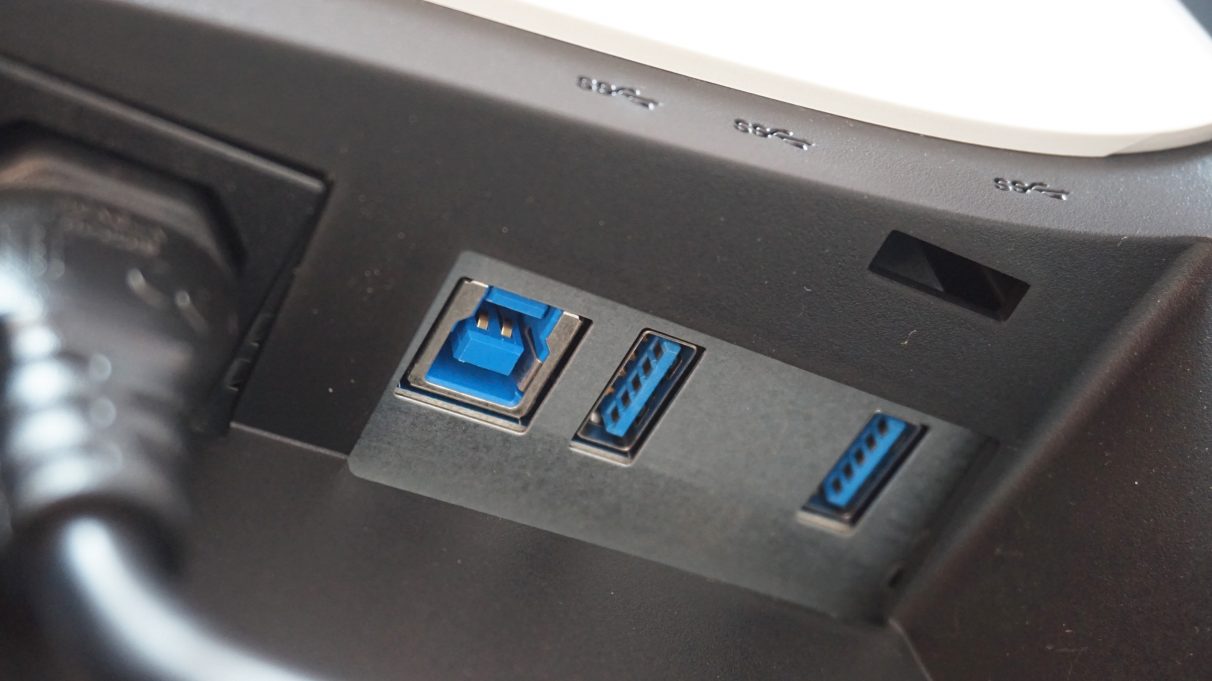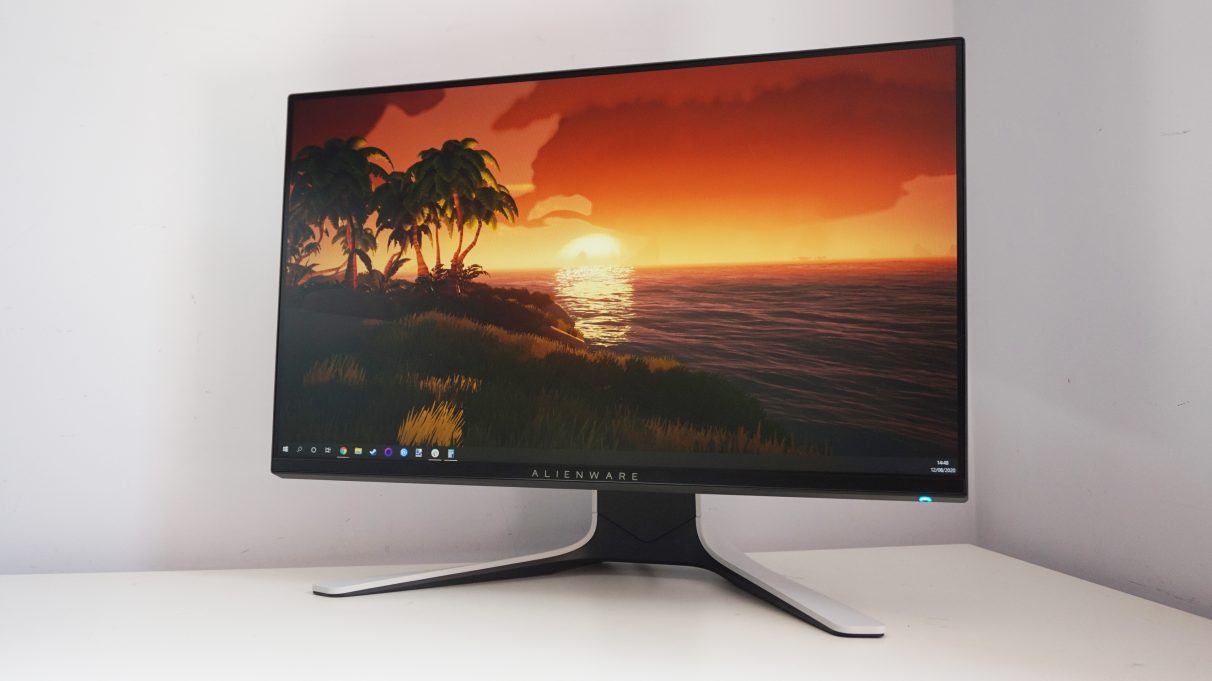The AW2521HFL has one key advantage over the AOC, and that’s the size of its panel. Both monitors have a resolution of 1920x1080, but the Alienware’s smaller 25in screen means it looks much sharper than its 27in rival. I’ve always said that 1920x1080 stretched across a 27in screen isn’t ideal, as while it’s fine for games, it’s just not quite good enough for everyday desktop tasks such as browsing the web or typing up documents. Text looks distinctly hazy and pixellated on a 27in 1920x1080 display, and I always feel like my eyes are having to work harder when I do anything other than playing games on these screens. On a 25in display, however, 1920x1080 is absolutely perfect. It’s just the right size for this resolution, and it means the AW2521HFL is a lot more versatile as a result. I felt a lot more comfortable using the AW2521HFL for both work and play during my testing, and it was generally a lot more pleasant to use day to day. Like its AW2518H predecessor, though, the AW2521HFL’s sci-fi-infused, Area 51-style design probably won’t be to everyone’s tastes. Indeed, Dell appear to have really doubled down on this kind of look with their current crop of gaming goods, as everything from their Alienware laptops to their Aurora desktop PCs have similar RGB halo rings and big stylised numbers somewhere tying them all together. Personally, I’m not particularly opposed to it either way, but it’s definitely not as lovely as AOC’s slim, black and red C27G2ZU. Fortunately, a lot of the AW2521HFL’s more eye-catching bits of design are relegated to the rear of the monitor, and you can always turn the RGB lighting in its stand using the monitor’s onboard menu system if you find its rainbow-coloured light show on your back wall too distracting. As a result, all you’re really left with is its rounded, blade-like feet - which are also available in black as the AW2521HF if you’re not a fan of the Lunar White (hence the extra L) version I’ve got on test here. More importantly, though, the colour accuracy of AW2521HFL’s IPS panel also leaves a lot to be desired compared to its AOC rival. Whereas my X-Rite DisplayPro i1 colour calibrator showed the AOC C27G2ZU was already showing a near perfect 99% of the sRGB colour gamut straight out of the box on maximum brightness, the AW2521HFL only returned a rather sub-par coverage score of 90.9% when I tested it on its default Standard preset. I’d normally expect an IPS panel to hit around 96% of the sRGB colour gamut, but this was more in line with what I’d expect from a good TN panel. I also recorded a very high black level of 1.36cd/m2 (the closer to 0.00cd/m2, the better, and most IPS monitors tend to score somewhere between 0.20-0.50cd/m2 for the sake of comparison), and a strangely low contrast ratio of just 236:1. I re-tested this multiple times to double check it wasn’t an anomaly, but the same results kept coming up over and over again. I didn’t see much improvement when I switched over to its Custom Colour preset, either, which was also a bit of a worry. While I managed to bump up its sRGB coverage a bit to 91.5%, its black level actually increased to 1.54cd/m2, and its contrast ratio remained at a disappointing 234:1. Instead, I found that the best and most accurate preset on the AW2521HFL was its Gamer profile. Usually, Gamer presets actually look a lot worse than a monitor’s Standard settings, so I was surprised to see the AW2521HFL actually improved here. I still only saw an sRGB coverage score of 93.8%, admittedly, but its black level was a much more acceptable 0.42cd/m2 on this preset, and its contrast ratio also rose to a healthier (though still not brilliant) 891:1, so I’d definitely recommend switching to this straight away to get the best and most accurate colours. It’s also the profile with the highest brightness level, too, peaking at around 380cd/m2, giving you plenty of flexibility to tackle all sorts of different lighting conditions. It’s definitely better than trying to fiddle with its Custom Colour preset, if only because each of its three Gamer profiles give you exactly the same level of control over its dozens of colour options. They’re not particularly user-friendly, all told, and Alienware could probably do with chopping a lot of them to make the onboard menu settings easier to understand. Whereas most gaming monitors just give you easy RGB bars to adjust up and down, the AW2521HFL splits them into Gain, Offset, Hue and Saturation, and it’s not immediately obvious which settings do what if you don’t already know what those individual terms actually mean. Then again, my attempts at calibrating the Gamer preset to try and improve things further didn’t actually yield the results I wanted (everything actually got a little worse), so they’re probably best left alone anyway. It’s not just colour settings you get on the AW2521HFL, though. There are also specific Sharpness, Response Time and Dark Stabilizer settings, the latter of which artificially brightens the screen to help you spot things in the shadows. It’s a feature often touted as a ‘must-have’ for competitive multiplayer games to give you that extra ’edge’ online - especially when said games are often the ones that can make the most of the AW2521HFL’s 240Hz refresh rate. However, I found that the screen’s regular peak brightness and accompanying contrast ratio from the Gamer preset was more than enough to help me see everything that I needed to in-game. Then again, I often have a hard enough time just keeping up with the fact I’m playing a game at 240fps, let alone having the reaction times to spot other players hiding in the dark. As I said in my AOC C27G2ZU review, I suspect I’m simply too old and slow to fully appreciate the speed and smoothness offered by 240Hz gaming monitors, as my eyes simply can’t keep up with what’s playing out onscreen. I can handle 144Hz just fine, but 240Hz is beyond me. That’s not to say you shouldn’t buy a 240Hz gaming monitor full stop, of course, and I’m sure there are still plenty of people out there who can keep up with it and appreciate the difference it offers over a 144Hz gaming monitor. Besides, refresh rates are only set to increase over the coming years, and Asus have just announced they’re releasing their first 360Hz gaming monitor this September.
That 240Hz refresh rate does come at quite a cost over 144Hz gaming monitors, though (my current favourite is the £200 / $200 AOC 24G2U), and personally I think most people will be served perfectly well by one of these monitors rather than shelling out another hundred quid for a 240Hz job. However, even if you’re absolutely determined to get a 240Hz screen, the AW2521HFL is still quite a bit more expensive than some of its other 240Hz rivals. The AOC C27G2ZU currently goes for £300 in the UK (it’s still out of stock in the US), for example, as does Samsung’s 27in CRG5 at £300 / $370. The Alienware AW2521HFL, on the other hand, will set you back £329 / $385 at time of writing, meaning you’re actually paying more for a smaller screen overall. As I said earlier, I’d probably prefer to pay that little bit extra to get a smaller screen, if only so I could do more with it than just playing games without feeling like I need to get my eyes tested every five minutes. However, the AW2521HFL’s less than stellar panel does hold it back in my estimation, and I wish it had better contrast and just a smidge more sRGB colour gamut coverage to make it more competitive. Still, provided you hop over to one of its three Gamer presets, it’s still a perfectly all right gaming screen overall, and I think that its sharper pixel density and the extra versatility it offers just about outweigh the niggles I have with the quality of its panel. It’s not a particularly straightforward recommendation, but if you’re after a screen you can use for both work and play, the AW2521HFL is a decent choice.




